
Author: Natalie Ng|Updated: 9 May 2025
Great hair doesn’t have to be complicated. If you’re trying to keep your hair healthy, soft, and strong without spending hours in the salon, it all comes down to the small things you do every day. The way you wash your hair, the products you reach for, and even how you sleep at night all play a part in how your hair looks and feels. Washing your hair every couple of days helps protect your natural oils, and using heat protection before styling makes a big difference over time. What you eat matters too—nutrients like biotin and omega-3s support healthy hair growth and help your hair stay strong from root to tip. Swapping your pillowcase for silk, using oil treatments, and trimming based on your hair type are all simple habits that can seriously boost your hair health. If you’re looking for easy, no-fuss ways to keep your hair healthy and smooth, you’re in the right place—these tips can help you build a routine that actually works. Keep reading to find out what makes the biggest difference.

The Truth About Washing and Why Less Is Actually More
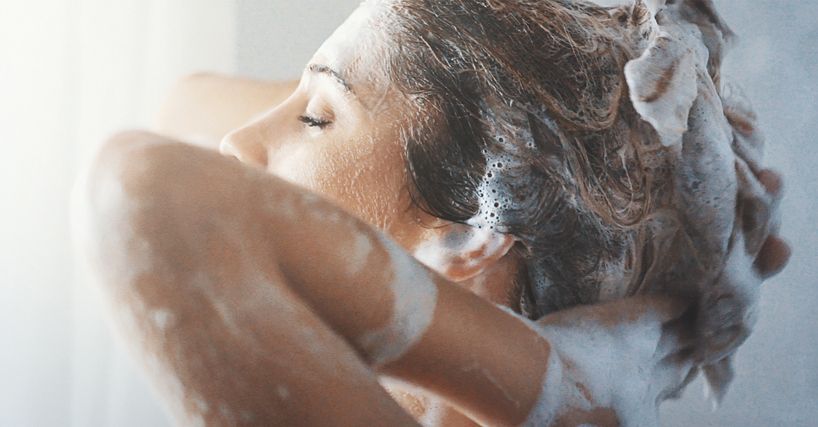
Washing too often can do more harm than good
It’s easy to think that clean hair means washing it every day, but doing that can actually make your hair worse over time. Shampooing too often strips natural oils from your scalp, which are there to keep the hair shaft moisturised and protected. Without those oils, your scalp may overproduce oil to make up for the dryness, or your strands might turn brittle, dull, or prone to hair breakage.
Aim for every 2–3 days, but listen to your hair
Hair washing every two to three days is usually enough to keep your scalp clean without removing what your hair actually needs to stay healthy. If your scalp feels oily in between, dry shampoo can help soak up excess oil. It’s also fine to rinse your hair with water or use a leave in conditioner on the days you skip shampooing, especially if you’ve been sweating or using a lot of styling products.
Adjust based on your hair type
Everyone’s hair is different, and the frequency of washing hair should be adjusted based on individual needs. If you’ve got thick or curly hair, you might notice it stays clean longer and needs fewer washes. If you have thin hair, straight hair, or an oily scalp, washing more often might work better for you. Climate, your workout routine, and your hair texture all play a role in how often you should wash your hair, so find a balance that works with your routine and keeps your scalp and strands feeling right.
Be gentle while washing
Always focus shampoo on your scalp where dead skin cells and product buildup collect. Avoid scrubbing the ends of your hair—they’ll get clean as you rinse. Rinse thoroughly and follow with the right conditioner for your hair type. This helps maintain scalp health and keeps your hair healthy from root to tip. Using lukewarm water can also help maintain the natural shine of your hair by preventing the loss of protective oils.

Essential Nutrients That Feed Your Hair From Within

What you eat directly affects your hair health
Healthy hair starts from the inside. While your shampoo and conditioner matter, your hair’s strength, shine, and growth depend heavily on what you put on your plate. Your body needs a steady supply of specific vitamins, minerals, and healthy fats to support hair growth, maintain moisture, and keep the hair shaft strong. Without them, you might notice slow growth, shedding, dullness, or brittle hair. Maintaining overall health through a balanced diet and adequate hydration is crucial for promoting strong, shiny hair.
Key nutrients that support healthy hair
Biotin
Biotin is a type of B vitamin that helps strengthen your hair and support steady hair growth. It plays a role in the production of keratin, the main protein found in hair. If you don’t get enough biotin, you might notice thinning or weak strands that break easily.
Iron
Iron helps red blood cells carry oxygen throughout your body, including to your scalp and hair follicles. Low iron levels can lead to hair loss or slow growth, especially in women. Leafy greens, red meat, and lentils are good sources.
Vitamin D
Vitamin D helps activate dormant hair follicles and reduce hair shedding. Low levels of this vitamin are linked to scalp conditions and hair thinning. You can get vitamin D from sunlight, eggs, and fortified foods.
Omega-3s
These healthy fats help reduce inflammation around the scalp and keep it hydrated. They also add shine and softness to your hair. Omega-3s are found in fatty fish like salmon, chia seeds, and walnuts.
Consistency matters more than quick fixes
Eating a balanced diet rich in whole grains, lean protein, fruits, vegetables, and healthy fats supports overall well-being and overall hair health. But don’t expect overnight results. It can take a few months of steady, nutrient-rich eating before you notice your hair becoming stronger or growing faster. If your hair feels thin or damaged even with proper care, it might help to check your nutrient levels with a doctor to rule out any deficiencies affecting your scalp health and hair follicles.
Book Now to Experience
F8 Hair Regrowth Treatment
1 Minute Self-Registration
Date should not be before minimal date

Professional Brush Techniques for Daily Maintenance
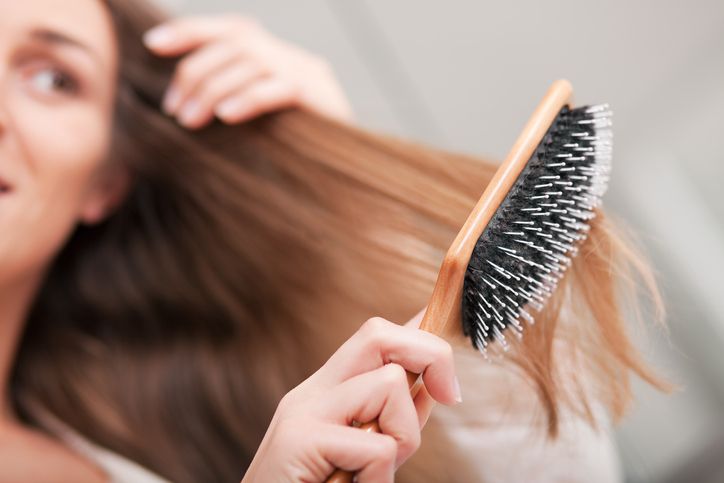
Brushing the right way can improve your overall hair health
Brushing seems simple, but doing it wrong can lead to breakage, frizz, and damaged or split ends, negatively impacting your hair's health. Proper brushing techniques help distribute natural oils from your scalp down to the ends of your hair, which keeps your strands moisturised and helps prevent dryness. It also reduces product buildup, removes dead skin cells near the roots, and keeps the hair shaft smooth and untangled.
How to brush without damaging your hair
Start from the bottom, not the roots
Always begin brushing at the ends and work your way up in sections. This avoids yanking through knots and reduces the risk of pulling or snapping the hair shaft, especially if you have curly or brittle hair.
Use the right tool for your hair type
A paddle brush works best for straight hair, while a wide tooth comb is a better option for curly or wavy hair. If your hair is wet, avoid regular brushes—wet hair is weaker and more prone to stretching and breaking. Instead, brush wet hair only with a wide tooth comb or a brush designed for wet detangling.
Brush gently and with control
Hold each section of hair gently between your fingers as you brush. This gives you more control and reduces tension on the scalp, which can prevent hair loss caused by repeated pulling at the roots.
Brushing is part of a healthy hair care routine, but it needs to be done with care. Focus on technique, choose the right tools, and avoid brushing too often or too aggressively.

Temperature Control: Protecting Your Hair From Heat Damage
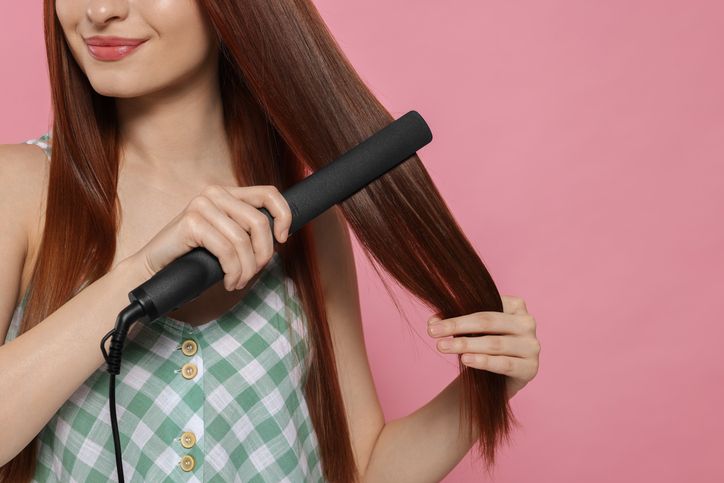
Heat styling can harm your hair if you don’t take precautions
Blow drying, curling irons, and straighteners all expose your hair to high temperatures, which can dry out the hair shaft, cause moisture loss, and lead to long-term damage. Without heat protection, repeated exposure weakens the outer layer of your strands and causes split ends, frizz, or hair breakage. Additionally, frequent heat styling can fade your hair color, making it look dull and lifeless.
How to use heat safely
Always prep with heat protection
Before you touch any hot tools, use a heat protectant spray or serum. These products add a protective barrier that helps reduce the direct impact of heat on your strands. This step is essential for keeping your hair healthy and smooth.
Set the right temperature for your hair type
Fine or damaged hair should stay between 300–350°F, while thicker or coarse hair can handle up to 400°F. Anything above that can burn your hair and damage the cuticle layer. If you're unsure, start lower and increase only if needed.
Keep the tool moving
Don’t let the tool sit too long in one spot. Keep it moving smoothly through your hair to avoid burning or overheating one section. Once styled, let the hair cool completely before touching or reshaping it—this helps set the style and reduces repeated heat exposure.
Book Now to Experience
F8 Hair Regrowth Treatment
1 Minute Self-Registration
Date should not be before minimal date

Pre-Shampoo Treatments
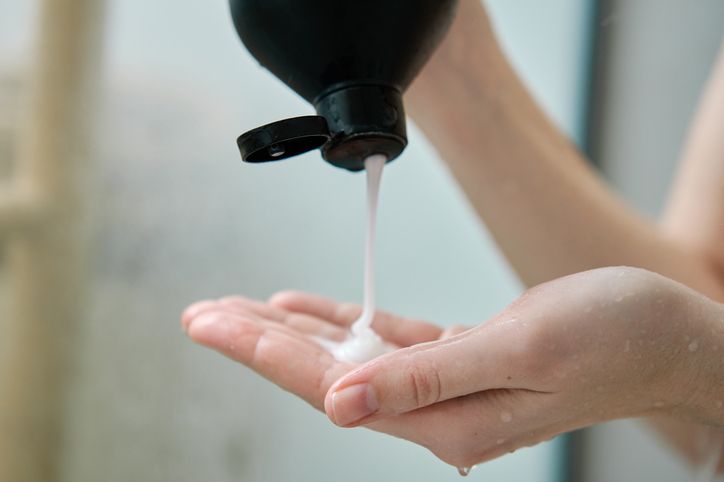
Prepping your hair before washing helps protect it from damage
Hair products like shampoos are great for cleaning your scalp, but they can also strip your strands of natural oils, especially if you’re using harsh or sulfate free shampoos too often. Pre-shampoo treatments act as a protective layer, keeping moisture in your hair and preventing dryness or tangling during washing.
How to use pre-shampoo treatments the right way
Apply to dry hair
Use oils or conditioning treatments before washing, focusing on the mid-lengths and ends where most damage happens. Dry hair absorbs the treatment better than wet hair.
Massage and let it sit
Massage the treatment into your strands, cover your hair with a shower cap, and leave it on for 15–30 minutes. This helps soften the hair, making it easier to detangle after washing and reducing the risk of breakage.
Pre-shampoo treatments are especially helpful if you have color treated or damaged hair. They support proper care by keeping your hair healthy before it even touches shampoo.

Silk Pillowcases and Overnight Hair Care Secrets
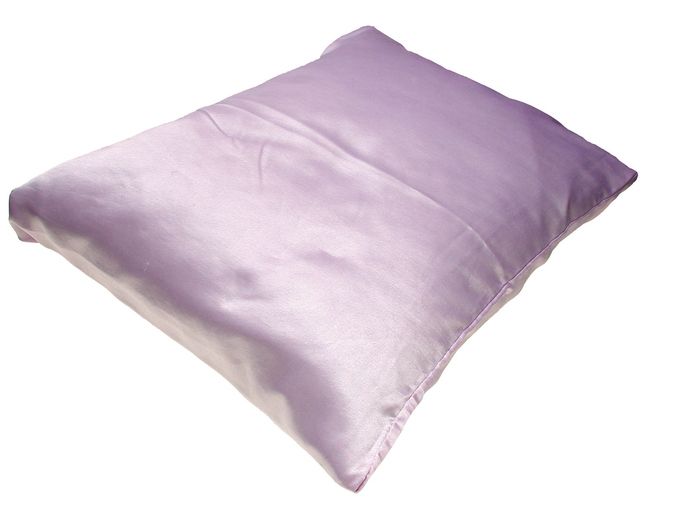
Your hair keeps working while you sleep—protect it the right way
Cotton pillowcases may feel soft, but they create friction that can rough up your hair cuticle, absorb your natural oils, and leave you with tangles or frizz in the morning. Switching to a silk pillowcase is a simple change that protects your hair overnight and helps maintain smooth hair with fewer knots and split ends. Additionally, silk pillowcases help maintain your natural color by reducing friction and preventing hair damage.
How silk helps your hair stay healthy
Less friction, fewer tangles
Silk is smooth and reduces the rubbing that causes hair breakage and frizz while you sleep. It helps your strands glide gently over the surface instead of getting tugged.
Keeps moisture in
Unlike cotton, silk doesn’t absorb natural oils from your hair, which helps keep your scalp and strands balanced. This matters especially if you’re trying to reduce dryness or preserve the effects of leave in conditioner or natural oil treatments.
Better for all hair types
Whether you have curly, straight, thick, or thin hair, silk supports overall hair health while you rest. You’ll wake up with less frizz, fewer knots, and more manageable hair.
If your hair is long or prone to tangling, try tying it loosely with silk scrunchies or wrapping it in a silk scarf before bed. It protects your hair and keeps styles like blowouts or curls lasting longer.
Book Now to Experience
F8 Hair Regrowth Treatment
1 Minute Self-Registration
Date should not be before minimal date

Strategic Trimming: When and How Often
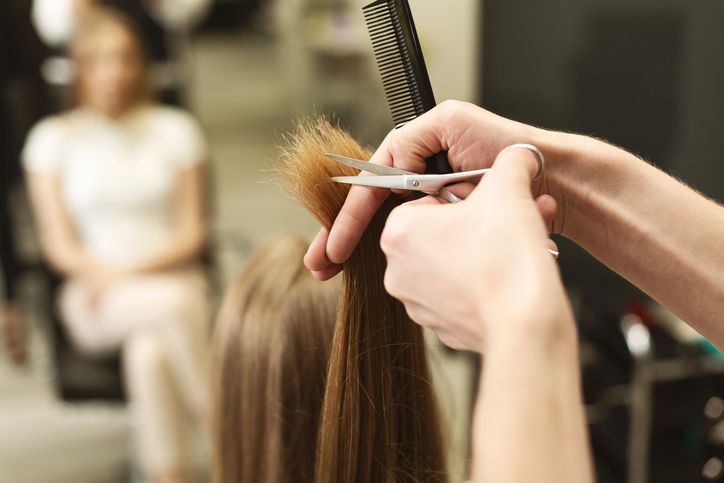
Regular trims keep your hair healthy and help it grow better
Regular haircuts might seem counterintuitive when trying to grow your hair longer, but skipping trims actually slows things down. Damaged or split ends can travel up the hair shaft, making your hair look thin, frizzy, and uneven. Regular trims help maintain your shape and remove weak spots before they turn into breakage.
How often you should trim depends on your hair type and routine
Fine or straight hair
Trims every 8–10 weeks help manage shape and reduce split ends, which show up more easily in this hair type.
Thick or coarse hair
You can usually wait 12–14 weeks between trims because this hair type tends to be more resilient and hides damage better.
Chemically treated or color treated hair
Hair that’s been bleached, dyed, or permed should be trimmed more often—every 6–8 weeks—since it’s more likely to become dry or brittle. To minimize damage, it is advisable to stay within three shades of your natural hair color, as drastic changes can lead to further hair issues.
Natural or low-maintenance hair
If your hair isn’t exposed to heat styling or harsh products, you may only need a trim every 12–16 weeks. Just keep an eye out for signs like increased tangling, dullness, or difficulty styling, which can signal it’s time for a cut.
Keeping up with regular trims supports overall hair health and helps prevent larger issues like breakage or thinning from developing.

Natural Oil Treatments
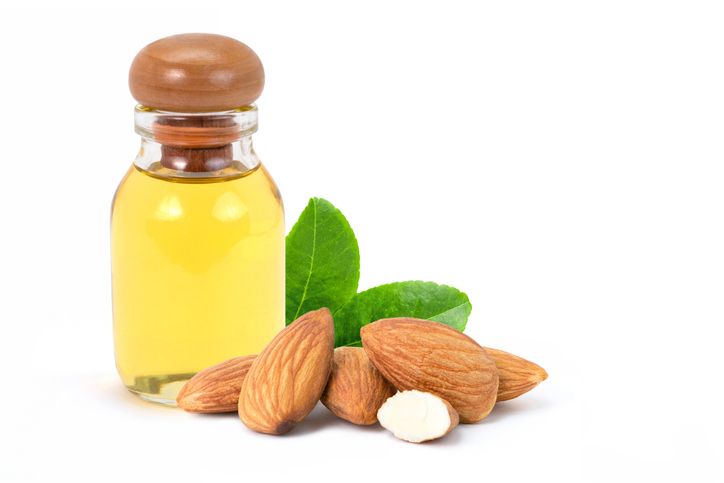
Oils can nourish your hair and support scalp health
Natural oils are one of the easiest and most effective ways to keep your hair healthy. Different oils serve different purposes, from softening the hair shaft to calming an irritated or oily scalp. They’re especially helpful for reducing moisture loss and improving shine without relying on heavy styling products. Additionally, protecting your hair while spending time outdoors is crucial to prevent damage from prolonged sun exposure. Using natural oils along with hats and UV protection products can help maintain hair health in sunny environments.
Choose the right oil for your hair’s needs
Coconut oil
This deeply penetrates the hair shaft and reduces protein loss. Ideal for damaged hair, it helps prevent breakage and keeps your strands strong.
Argan oil
Rich in vitamin E, argan oil smooths frizz, adds shine, and protects hair from heat styling and environmental damage.
Jojoba oil
Jojoba closely mimics your scalp’s natural sebum, making it perfect for dry or brittle hair. It hydrates without making your scalp greasy.
Almond oil
Packed with omega-3 fatty acids and magnesium, almond oil helps strengthen hair follicles and reduce split ends.
Warm a small amount of oil and massage it into your scalp and hair. Leave it on for at least 30 minutes, or overnight for deeper conditioning. Wash it out thoroughly to avoid product buildup.
Book Now to Experience
F8 Hair Regrowth Treatment
1 Minute Self-Registration
Date should not be before minimal date

The Right Way to Deep Condition Your Hair
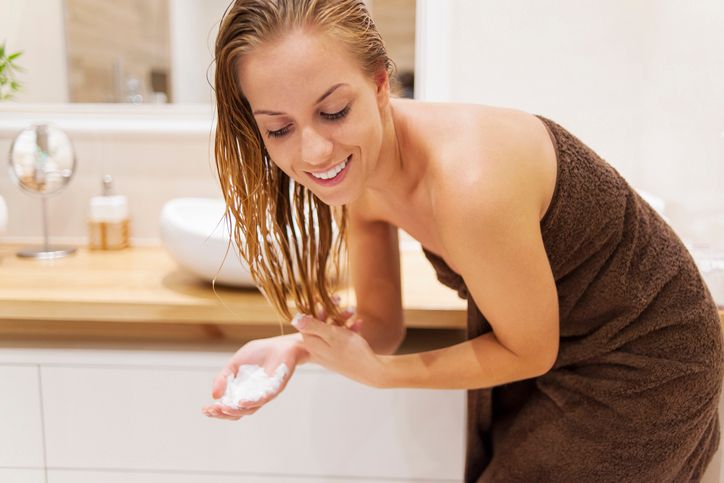
Deep conditioning helps repair damage and restore moisture
Regular conditioners are good for daily softness, but deep conditioning treatments go a step further. They help repair hair from within, strengthen the structure of the hair shaft, and are essential for maintaining healthy hair—especially if you use heat styling tools, have color treated hair, or spend a lot of time outdoors.
How to deep condition for real results
Start with clean, towel-dried hair
After shampooing, gently squeeze out excess water. Your hair should be damp—not dripping—so the product can absorb properly.
Apply from mid-lengths to ends
Focus on the areas that need the most repair. Use a wide tooth comb to distribute the conditioner evenly.
Cover your hair
Use a plastic cap or warm towel to trap heat, which helps the conditioner penetrate more deeply.
Wait 15–30 minutes
The timing depends on how dry or damaged your hair is. Afterward, rinse with cool water to seal the cuticle and lock in moisture.
Use deep conditioning treatments every 1–2 weeks, adjusting based on your hair texture and how often you use heat or chemical treatments.

Styling Products: What Professional Stylists Really Use
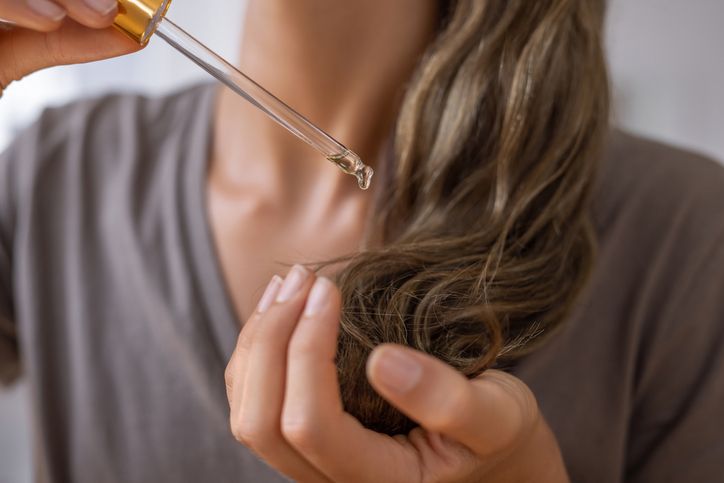
The right products can protect and support your hair—not just style it
Well-being is closely tied to the health of your hair, and many styling products are packed with ingredients that dry out your hair or leave behind heavy residue. Professional stylists go for formulas that protect the hair shaft, reduce frizz, and help maintain moisture. Choosing the right product helps support your healthy hair care routine instead of working against it.
What to look for in quality styling products
Lightweight serums
Products with silk proteins or argan oil help smooth the cuticle and control flyaways without making your hair greasy or heavy.
Heat protectants
Sprays or creams that form a barrier against hot tools are a must if you’re using curling irons or blow drying often.
Mousse or styling cream with hold
Look for flexible hold formulas that won’t make your hair stiff or crunchy. These work well for fine or thin hair to boost volume without product buildup.
Using the right mix of styling products helps keep your hair looking its best while protecting it from heat, moisture loss, and other daily stress. Avoid anything that causes dryness, excess oil, or irritation—and always choose what matches your hair type and texture.

F8 Hair Regrowth Treatment: A Game-Changer for Hair and Scalp Health
A professional treatment to support your healthy hair goals
If you're serious about maintaining healthy hair, the F8 Hair Regrowth Treatment can give your routine an extra boost. While daily care and a healthy diet help keep your hair strong, this treatment works deeper—directly at the scalp level—to support long-term hair growth and scalp health. It's a great addition if you're dealing with hair breakage, thinning, or a sluggish hair growth cycle.
How F8 works with your hair and scalp
The treatment starts with a professional consultation to assess your hair type, scalp condition, and the severity of any hair concerns. Then, a therapist applies low-energy laser across your scalp to stimulate inactive hair follicles, improve blood flow, and strengthen the hair papilla. This helps supply an adequate amount of nutrients to support healthy hair growth.
Next, a hair growth serum is applied. The laser energy improves how well the serum absorbs, allowing it to cleanse the scalp, unclog pores, and hydrate dry areas. This helps balance sebum levels, reduce excess oil, and improve the condition of both scalp and hair follicles.
Key benefits of the F8 Hair Regrowth Treatment
• Non-invasive and safe for both men and women
• Supports microcirculation to nourish hair follicles
• Helps prevent hair loss and promote hair growth
• Improves scalp conditions like oily scalp or buildup
• Encourages smoother, stronger, and healthier locks
By targeting the root causes of hair problems—like poor blood flow, clogged follicles, and sebum imbalance—F8 enhances the effects of your overall hair care routine. It helps your strands remain strong, reduces scalp irritation, and supports lasting improvements in volume and hair texture.
Want stronger, healthier hair that lasts? Book your F8 Hair Regrowth Treatment now and give your hair the support it needs from the root.
New Beauty's F8 Hair Regrowth TreatmentBook Now to Experience
F8 Hair Regrowth Treatment
1 Minute Self-Registration
Date should not be before minimal date
FAQ
1. What is the best shampoo for maintaining healthy hair and scalp?
Look for sulfate free shampoos that gently cleanse without stripping natural oils from your scalp and hair. The right shampoo should match your hair type—whether you have oily hair, dry scalp, color treated strands, or thin hair. Ingredients like tea tree oil, aloe vera, and zinc can help improve scalp health, reduce buildup, and prevent excess oil or irritation. Always avoid harsh ingredients that dry out the hair shaft or trigger scalp conditions.
2. How often should I brush wet hair to prevent breakage?
Wet hair is at its weakest, so brushing should be limited and done very gently. If you need to detangle wet hair, always use a wide tooth comb or a brush designed specifically for wet hair. Start from the ends and work upward in small sections. Brushing too aggressively when hair is wet can cause unnecessary hair breakage and split ends, especially in people with fine or brittle hair.
3. Can tight hairstyles cause hair loss or damage?
Yes, wearing tight hairstyles too often can lead to tension on the hair follicles, which may result in a condition called traction alopecia. This type of hair loss is caused by repeated pulling at the scalp and can damage the roots over time. To protect your hair health, avoid tight ponytails, buns, or braids daily. Give your scalp a break, rotate styles, and use soft hair ties like silk scrunchies to reduce friction and stress.
4. What role does a balanced diet play in hair growth?
A healthy diet directly impacts overall hair health. Nutrients like protein, iron, biotin, omega-3s, and zinc all support strong hair follicles, healthy scalp function, and consistent hair growth. A balanced diet rich in leafy greens, lean protein, nuts, whole grains, and fatty fish helps nourish the hair from within. Poor nutrition or restrictive eating can lead to hair thinning, dullness, and slow growth.
5. How can I tell if product buildup is affecting my hair?
If your hair starts to feel heavy, greasy shortly after washing, or lacks shine and volume, it may be due to product buildup. Styling products, dry shampoos, and leave in conditioners can collect on the scalp and block the hair follicles, which may impact scalp health and cause irritation. Clarifying treatments or using the right shampoo once a week can help clear out buildup and restore balance to your scalp and hair texture.
Recommended Articles
COPYRIGHT© NEW BEAUTY MANAGEMENT LIMITED 2025. ALL RIGHT RESERVED.



